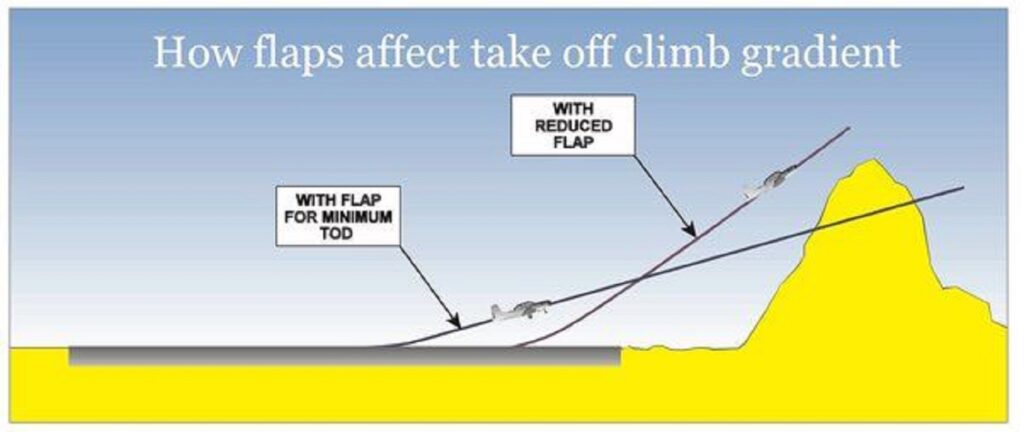
Choosing the right flap setting for takeoff can be a bit of a puzzle. It’s a balance between minimizing your takeoff distance and not compromising your climb performance. Even at the lowest flap setting, there’s some extra drag, and the more you extend them, the more drag you create, which could hinder your climb after takeoff. This becomes particularly crucial if you have obstacles to clear during your initial climb. Even if higher flap settings reduce your takeoff roll, they might not give you enough clearance over obstacles.
Each aircraft’s Flight Crew Operating Manual (FCOM) provides specific authorized flap settings for takeoffs and landings, and pilots are expected to follow these guidelines. However, within these limits, pilots have some freedom to choose the flap setting based on factors like runway length, aircraft weight, and tail clearance. Airline-specific procedures can also influence this decision. In many cases, pilots opt for a flap setting that allows for the highest assumed temperature or flex temperature during takeoff to prolong engine life, provided there are no other factors impacting takeoff performance.
Now, when it comes to landing, are the flap settings typically lower than for takeoff? Yes, but this can vary depending on the aircraft. Let’s take the Dash 8 as an example. It offers flap settings of 5, 10, 15, and 35. Flaps 15 and 35 are primarily used for landing, but interestingly, flaps 15 can also be a takeoff setting. Some pilots choose flaps 15 for takeoffs on long runways. In fact, there are pilots who have never used flap 35 for landing because they operate on longer runways. Flap 35 is particularly helpful for short-field landings. If an airline operates on longer runways, flap 35 may rarely be needed.
In Airbus aircraft, the flap numbers displayed in the cockpit are consistent, although they may not directly correspond to the actual flap angles. Excluding the A300 and A310 all Airbus aircraft use the same flap settings: Flap 1, 2, 3, and FULL. Flaps 1, 2, and 3 are all intended for takeoff, while Flap FULL is exclusively for landing. However, there’s also the option of using Flap 3 for landings. Some airlines recommend Flap 3 on long runways because it reduces drag, which in turn conserves fuel. Therefore, depending on the specific aircraft and the prevailing conditions, the flap settings for takeoff and landing may be the same
The reason landing flaps are set at a higher angle is to increase drag and enable the wing to generate lift at lower speeds during the landing phase. Flaps are a critical tool in achieving these goals. When you’re approaching for a landing, climbing isn’t a priority, so the emphasis is on safely slowing down and descending to the runway.
Author – Nischal Paudel
Pilot






